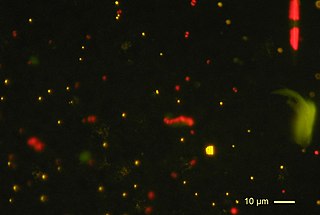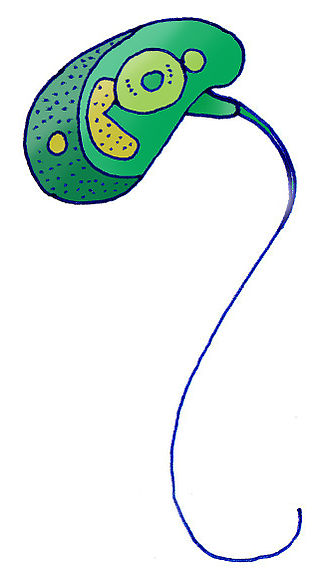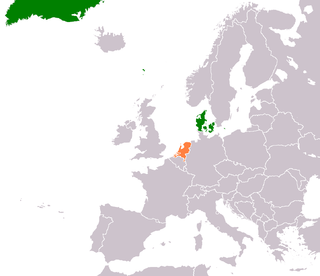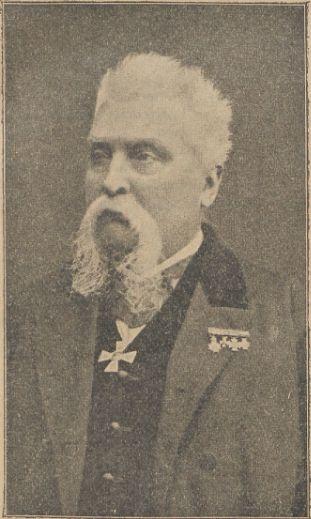
The Stramenopiles, also called Heterokonts, are a clade of organisms distinguished by the presence of stiff tripartite external hairs. In most species, the hairs are attached to flagella, in some they are attached to other areas of the cellular surface, and in some they have been secondarily lost. Stramenopiles represent one of the three major clades in the SAR supergroup, along with Alveolata and Rhizaria.

Coccolithophores, or coccolithophorids, are single-celled organisms which are part of the phytoplankton, the autotrophic (self-feeding) component of the plankton community. They form a group of about 200 species, and belong either to the kingdom Protista, according to Robert Whittaker's five-kingdom system, or clade Hacrobia, according to a newer biological classification system. Within the Hacrobia, the coccolithophores are in the phylum or division Haptophyta, class Prymnesiophyceae. Coccolithophores are almost exclusively marine, are photosynthetic, and exist in large numbers throughout the sunlight zone of the ocean.

The haptophytes, classified either as the Haptophyta, Haptophytina or Prymnesiophyta, are a clade of algae.
The role of sadism and masochism in fiction has attracted serious scholarly attention. Anthony Storr has commented that the volume of sadomasochist pornography shows that sadomasochistic interest is widespread in Western society; John Kucich has noted the importance of masochism in late-19th-century British colonial fiction. This article presents appearances of sadomasochism in literature and works of fiction in the various media.

The Belgium national football team officially represents Belgium in men's international football since their maiden match in 1904. The squad is under the global jurisdiction of FIFA and is governed in Europe by UEFA—both of which were co-founded by the Belgian team's supervising body, the Royal Belgian Football Association. Periods of regular Belgian representation at the highest international level, from 1920 to 1938, from 1982 to 2002 and again from 2014 onwards, have alternated with mostly unsuccessful qualification rounds. Most of Belgium's home matches are played at the King Baudouin Stadium in Brussels.

The Archaeplastida are a major group of eukaryotes, comprising the photoautotrophic red algae (Rhodophyta), green algae, land plants, and the minor group glaucophytes. It also includes the non-photosynthetic lineage Rhodelphidia, a predatorial (eukaryotrophic) flagellate that is sister to the Rhodophyta, and probably the microscopic picozoans. The Archaeplastida have chloroplasts that are surrounded by two membranes, suggesting that they were acquired directly through a single endosymbiosis event by phagocytosis of a cyanobacterium. All other groups which have chloroplasts, besides the amoeboid genus Paulinella, have chloroplasts surrounded by three or four membranes, suggesting they were acquired secondarily from red or green algae. Unlike red and green algae, glaucophytes have never been involved in secondary endosymbiosis events.

Symsagittifera roscoffensis, also called the Roscoff worm, the mint-sauce worm, or the shilly-shally worm, is a marine worm belonging to the phylum Xenacoelomorpha. The origin and nature of the green color of this worm stimulated the intrigued zoologists in the 1870's. It was discovered that the coloring resulted from the symbiosis between the animal and a green micro-algae, the species Tetraselmis convolutae, hosted under its epidermis. It is the photosynthetic activity of the micro-algae in hospite that provides the essential nutrients for the worm. This partnership is called photosymbiosis, from "photo", "light", and symbiosis "who lives with". These photosynthetic marine animals live in colonies on the tidal zone.

Photosynthetic picoplankton or picophytoplankton is the fraction of the photosynthetic phytoplankton of cell sizes between 0.2 and 2 µm. It is especially important in the central oligotrophic regions of the world oceans that have very low concentration of nutrients.
Phycodnaviridae is a family of large (100–560 kb) double-stranded DNA viruses that infect marine or freshwater eukaryotic algae. Viruses within this family have a similar morphology, with an icosahedral capsid. As of 2014, there were 33 species in this family, divided among 6 genera. This family belongs to a super-group of large viruses known as nucleocytoplasmic large DNA viruses. Evidence was published in 2014 suggesting that specific strains of Phycodnaviridae might infect humans rather than just algal species, as was previously believed. Most genera under this family enter the host cell by cell receptor endocytosis and replicate in the nucleus. Phycodnaviridae play important ecological roles by regulating the growth and productivity of their algal hosts. Algal species such Heterosigma akashiwo and the genus Chrysochromulina can form dense blooms which can be damaging to fisheries, resulting in losses in the aquaculture industry. Heterosigma akashiwo virus (HaV) has been suggested for use as a microbial agent to prevent the recurrence of toxic red tides produced by this algal species. Phycodnaviridae cause death and lysis of freshwater and marine algal species, liberating organic carbon, nitrogen and phosphorus into the water, providing nutrients for the microbial loop.

Micromonas is a genus of green algae in the family Mamiellaceae.

Huis ter Nieuwburg or Huis ter Nieuburch was a palace in Rijswijk, Holland, Dutch Republic. The symmetrical French Classicist building was probably designed by the Dutch architect Jacob van Campen together with Constantin Huygens and the prince himself. According to Slothouwer the designs were carried out by Arent van's Gravesande who was replaced by the French architect Simon de la Vallée in 1634. The palace was built between 1630 and 1636 for stadtholder Prince Frederick Henry.

Chrysochromulina is a genus of haptophytes. This phytoplankton is distributed globally in brackish and marine waters across approximately 60 known species. All Chrysochromulina species are phototrophic, however some have been shown to be mixotrophic, including exhibiting phagotrophy under certain environmental conditions. The cells are small, characterized by having scales, and typically observed using electron microscopy. Some species, under certain environmental conditions have been shown to produce toxic compounds that are harmful to larger marine life including fish.

Denmark–Netherlands relations are the bilateral relations between Denmark and the Netherlands. The Netherlands has an embassy in Copenhagen and Denmark has an embassy in The Hague. Both countries are full members of the Council of Europe, the European Union and NATO. Princess Beatrix is a Dame of the Order of the Elephant since 29 October 1975. On 31 January 1998, King Willem-Alexander of the Netherlands also received the Order of the Elephant.

Cornelis Johannes Marius Nagtglas was a Dutch politician and civil servant, who made a career in the administration on the Dutch Gold Coast. After originally beginning his career at the advanced age of 36, he was promoted through the ranks to eventually become Governor of the Dutch Gold Coast in 1858. He retired to the Netherlands in 1862, but returned to the Gold Coast as governor in 1869, to restore order in the embattled colony. In 1871, he left the Gold Coast again, one year before the transfer of the colony to the United Kingdom.

A protist is any eukaryotic organism that is not an animal, plant, or fungus. The protists do not form a natural group, or clade, since they exclude certain eukaryotes with whom they share a common ancestor; but, like algae or invertebrates, the grouping is used for convenience. In some systems of biological classification, such as the popular five-kingdom scheme proposed by Robert Whittaker in 1969, the protists make up a kingdom called Protista, composed of "organisms which are unicellular or unicellular-colonial and which form no tissues". In the 21st century, the classification shifted toward a two-kingdom system of protists: Chromista and Protozoa.
The history of the Belgium national football team officially dates back to their first international in 1904. The Royal Belgian Football Association, which governs the team, co-founded the international governing bodies FIFA and UEFA. As of October 2015, Belgium qualified for 12 FIFA World Cups and 5 UEFA European Championships. In the periods 1920–1938, 1970–2002 and since 2014 Belgium participated in many international tournaments, including three Olympic football tournaments in the 1920s. So far, the national side is considered to have had two golden generations: one in the 1980s and early 1990s, and one since the early 2010s.

Chrysochromulina ericina virus 01B, or simply Chrysochromulina ericina virus (CeV) is a giant virus in the family Mimiviridae infecting Haptolina ericina, a marine microalgae member of the Haptophyta. CeV is a dsDNA virus.
Rappephyceae, or Rappemonads, are a small family of protists first described in 2011, of uncertain phylogenic affinity. It has been discussed as a possible member of a larger clade Haptophyta. This newly identified taxonomic class of phytoplankton are named after a professor from the Hawai’i institute of marine biology, known as Michael Rappé. Rappé discovered these phytoplankton in the Atlantic Ocean and published his findings on their DNA in 1998. Current research has shown that these organisms provide an immense amount of nutritional organic molecules, such as oxygen, for other organisms using biochemical processes like photosynthesis and carbon fixation.
Rebecca is a genus of photosynthetic, flagellated marine haptophytes. It is one of four genera in the family Pavlovaceae. The holotype species, R. salina, was described in 2000 by J.C. Green; it is one of three species currently accepted in the genus. Also in the genus is R. helicata, which was described in the same publication as R. salina, and the third member is R. billiardiae, which was described in 2023. R. helicata and R. salina were both previously considered to be within the genus Pavlova.















